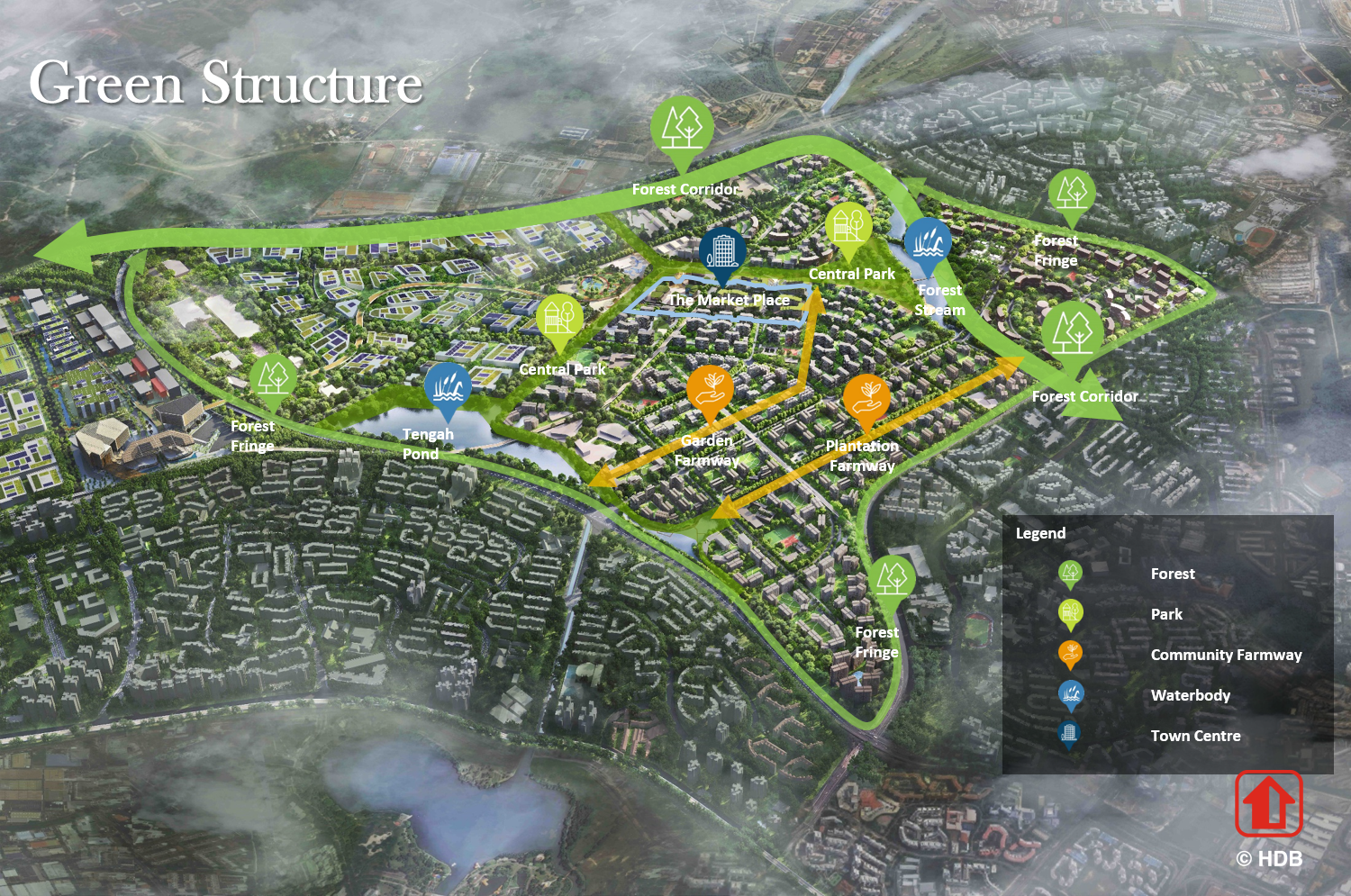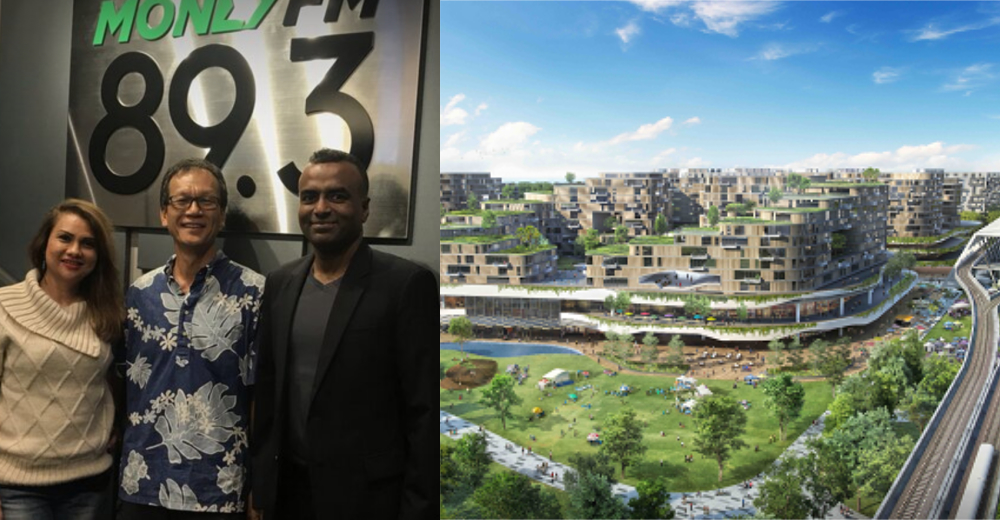Tengah forest town is the up-and-coming new housing district with a size akin to Bishan.
The forest town is particularly attractive to home buyers for its futuristic masterplan that includes going car-lite, having community farms and centralised cooling system.
However, the hullabaloo over Tengah forest town has also been about the environmental impact of developing 700ha of Tengah forest.
With the completion of the housing development, only 10 percent of the current forest will be left.
Hence, an environmental baseline study has been carried out to assess the environmental impacts so as to find solutions to mitigate or minimise them.
Disputes over Tengah forest's conservation value
A recent report by The Straits Times on Jan. 12 suggested that the Housing Development Board (HDB) undermined the value of the Tengah forest in its environmental baseline study.
HDB is unlikely to reveal the full report of the environmental study to the public, according to the report.
Instead, HDB shared that the vegetation at Tengah is mostly "scrublands, woodlands and secondary forests of low conservation significance and... relatively young", and therefore, has "low conservation significance".
HDB also mentioned common animals such as wild boars, long-tailed macaques and monitor lizards that are residing in the forest, leaving out rare species that have supposedly been sighted.
The vice-president of Nature Society Singapore (NSS), Ho Hua Chew, disagreed that Tengah forest is of low conservation value and called out the mentioning of common species as "rather misleading".
Ho also worried that misleading conclusions are made with "poorly designed studies" that "may rely on inappropriate methods, or small sample sizes, or exclude potentially important factors in their analyses".
Home to rare wildlife
Following the article, the President of NSS Shawn Lum spoke more about his take on the Tengah development project in an interview with Money FM 89.3.
He shared that the Tengah forest has regenerated and become "one of the largest contiguous pieces of green area" in Singapore despite not being a secondary forest.
Animals are observed passing through the Tengah forest to go to the Western Catchment and the Central Catchment Nature Reserve, dispersing seeds that they carry with them.
Although the forest used to be kampongs and plantation lands, Tengah forest has now become a "significant chunk of real estate for nature not just for people".
Tengah forest is, in fact, one of the last few strongholds for globally endangered animals, such as the straw-headed bulbuls and long-tailed parakeets.
Other endangered wildlife spotted are the critically-endangered Sunda pangolins, and a nesting changeable hawk-eagle.
Forest corridor not enough to support wildlife
Granted, the planners have set aside 50ha area to create a forest corridor of 100m wide in the development plan to facilitate animals' movements as a connector.
 Image from HDB.
Image from HDB.
However, the effectiveness in helping the wildlife adapt to the change with this corridor is questionable.
Lum highlighted that the forest corridor is still not a solution to the loss of habitats that these endangered species face with the development of Tengah forest town:
"The trouble is as a habitat itself it may not be sufficient to support this endangered species and the other challenge is that there are these severe barriers on either side of the corridor -- one being the KJE to the west and on the east there is a whole Bukit Batok estate so where are the wildlife going to go to."
In fact, the 50ha area set aside for the forest corridor is a far cry from what NSS proposed, which includes two nodes of viable habitats within the development site.
However, even with 50ha area, Lum questions if a forest corridor is the best approach.
"Here the difficulty is, if we’re limited to 50ha, how do we allocate the 50ha? Is it all as 100m belt or just make a narrower belt and then make two bigger chunks on the side?"
Call for greater involvement of nature experts
When asked to compare the Tengah development project with the Cross Island Line project, Lum mentioned that besides the land statuses, the dialogue process is also very different.
"The other thing is process itself with the Cross Island Line, what the LTA engaged was a five-year continuing dialogue, very frequent and detailed dialogue with different interest groups -- include the nature groups so that has led to fine-tuning in every step of the way in terms of the planning, the soil testing and everything."
Lum is encouraging the planners of Tengah forest town to involve the nature experts and researchers more as they can help to fine-tune the mitigation measures to reduce the impact on the wildlife.
"I think it’s not just the Nature Society but the people who understand wildlife in the academic communities as well. Not just what is there but how are they distributed across the site, are these wildlife tend to be locally... don’t move around beyond the little home base or these animals that move over a wide range. If we knew exactly how many of individuals, how many species were there, even rough estimates where were they found, I think that would allow the planners a bit better to fine grain the information that they could incorporate when they plan for the site."
"How do you take the characteristics of the habitats, the species, work out what’s the desired outcome of it and you can actually put it to a designing or modelling process. We can do that now, it’s not just a hope."
Currently, 150ha of the designated development site has already been cleared.
The first sale of flats at Tengah forest town (Plantation Grove) was launched November last year.
You can listen to the full interview with Lum here:
Top photo collage from screenshot of Money 89.3 and HDB website
If you like what you read, follow us on Facebook, Instagram, Twitter and Telegram to get the latest updates.
